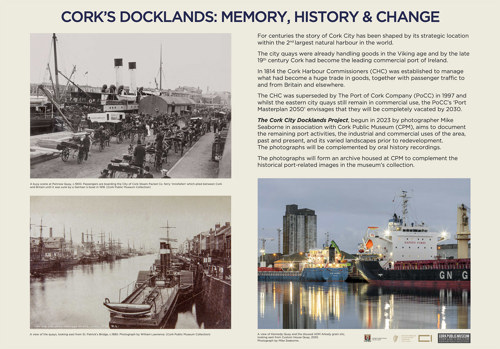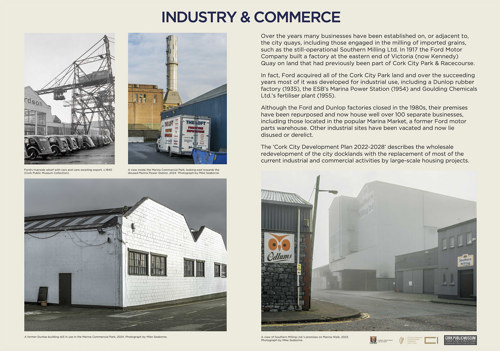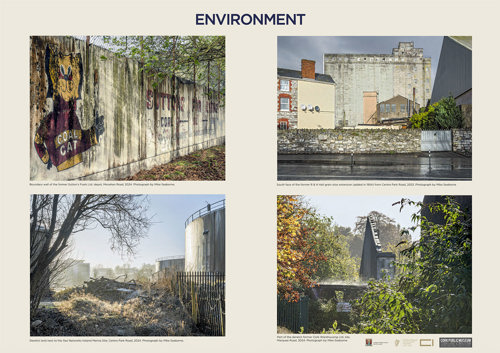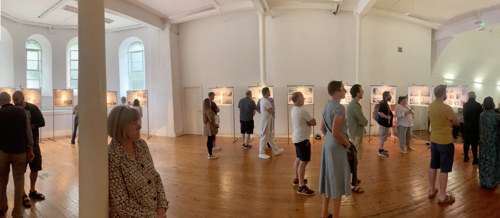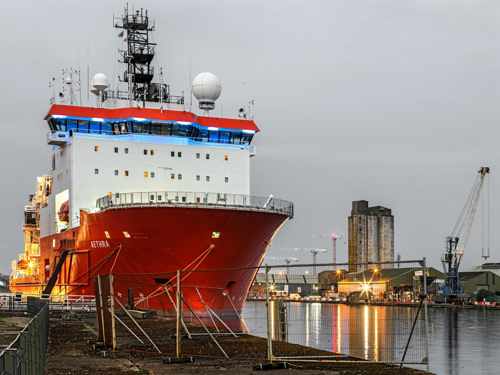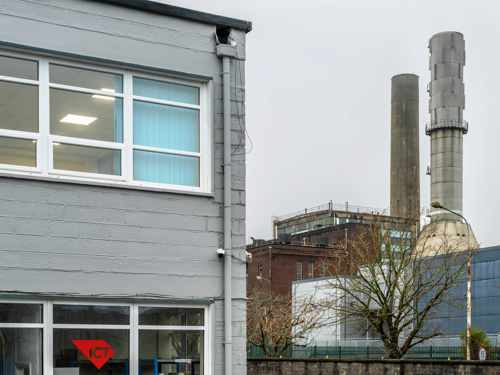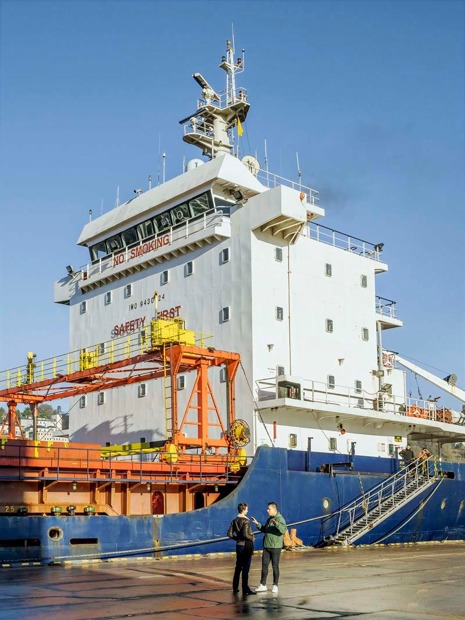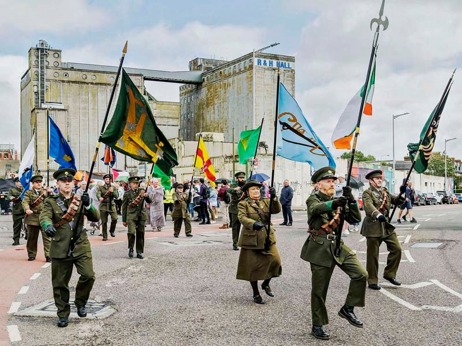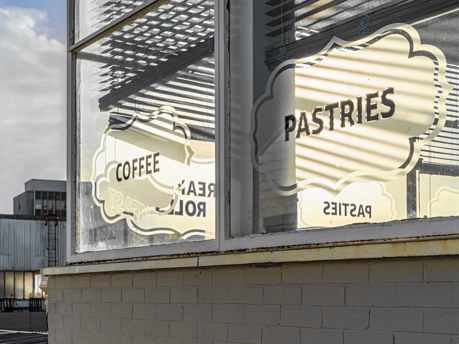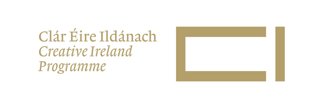Cork Docklands: History Memory and Change
A collaborative heritage project documenting the transformation of Cork’s historic docklands through photography, oral history, and museum curation.
Above: Cork Docklands, Kennedy Quay and Custom House Quay from R+H Hall, 1949. (CPM Collection)
Overview
Cork Docklands: History, Memory, and Change is a joint initiative by photographer Mike Seaborne, folklorist James Furey, and Cork Public Museum.
The project explores the transformation of Cork’s historic docklands—once a major industrial and maritime hub—into Ireland’s largest urban regeneration area.
Through visual documentation, oral testimonies, and archival research, it aims to preserve the docklands’ evolving identity and cultural memory for future generations.
Above: Daniel Breen (museum curator) at the pop-up 'Antiques Roadshow' at St Lukes Church, during the St Lukes 200th Anniversary, Aug 2025.
Origins and Development
With the relocation of port operations to Ringaskiddy, Cork’s docklands have entered a new phase of redevelopment, blending industrial heritage with modern design.
Photographer Mike Seaborne began documenting the changing landscape in 2023, inspired by his earlier work on London’s East End, in the 1980's.
In 2024, Cork Public Museum joined as a partner, expanding the scope to include oral history and material culture, ensuring a multidimensional record of the area’s transformation.
Above: A selection of exhibition panels from Cork Docklands: History, Memory and Change
Oral History: Voices of the Docklands
In 2025, folklorist James Furey launched an oral history programme to capture the human stories behind the docklands’ renewal.
Through interviews with residents, former dockworkers, business owners, and community advocates, the project records personal perspectives on change, resilience, and identity.
Each interview is transcribed, catalogued, and preserved to professional archival standards, with selected excerpts shared publicly through exhibitions and digital platforms.
Here is a sample of James Furey's audio recordings of the Cork Docklands project:
Diarmuid O'Sullivan Interview (Marina Industrial Park)
CCDOHP01 Could Be Anywhere In The World
Cathal O'Boyle (City Council Architect)
CCDOHP02 Arival Into The City Fenders On The North Dock
CCDOHP02 Docklands Relativly New Centre Park Road Name
CCDOHP02 Maintining Built Heritage
CCDOHP02 Not Much Interaction But See The Historical
James O'Shea (Business owner and Victoria Road Resident)
CCDOHP03 Tankers At Tivoli And Swimming In The River
CCDOHP03 The Building Of The Power Staion
Docklands Oral History Project Audio Excerpts
Key Themes Emerging from the Research
- Transformation and Heritage: Balancing regeneration with respect for industrial history.
- Social Cohesion: Remembering the docklands’ strong community bonds.
- Resilience and Adaptation: Reflecting innovation and perseverance amid change.
- Human-Centred Urbanism: Advocating inclusive, sustainable redevelopment.
Together, these themes reveal how the docklands’ renewal is not only physical but deeply cultural—linking memory, identity, and place.
Above:Postcard Port of Cork Docklands River Lee The Quays. (CPM Lawrence Collection)
Photographic Documentation
Since 2023, Mike Seaborne has made over eighty site visits, producing more than four hundred images of the evolving waterfront.
His photographs document both the remnants of heavy industry and the rise of new developments along the River Lee.
This collection, housed within the Cork Public Museum’s Docklands Archive, integrates photography, oral testimonies, and historic materials to create a comprehensive record of change.
Public Engagement and Exhibitions
Public engagement lies at the heart of the project. Exhibitions at European Maritime Week 2025, St. Luke’s 200th Festival, and Cork Heritage Week have showcased Seaborne’s imagery and Furey’s oral histories, sparking public dialogue about Cork’s heritage and urban future.
The museum continues to collect artefacts, photographs, and personal memorabilia from former dockworkers and residents, many of which are being digitised for long-term access.
Above: Mike Seaborne and Dara McGrath (CPM) at European Maritime Week 2025
Above: Opening of the St Lukes 200th Anniversary exhibition Aug 2025
Future Vision
The project team plans to expand both the photographic and oral history archives.
Upcoming work includes new interviews, portrait photography, and deeper thematic analysis.
The Cork Public Museum will preserve these collections permanently and host a major exhibition uniting visual, oral, and material histories to tell the story of Cork Docklands—past, present, and future.
Above: Cork Park with Marina Walk and Tivoli in background, c.1900 (Private Collection)
Conclusion
Cork Docklands: History, Memory, and Change exemplifies how collaboration between artists, historians, and institutions can illuminate the social and cultural dimensions of urban regeneration.
By combining photography, oral testimony, and curatorial expertise, the project safeguards the docklands’ industrial heritage while documenting its ongoing transformation as a vital part of Cork’s future.
Below: A selection of photographs by Mike Seaborne from his ongoing project on Corks Docklands
Cork Docklands: History, Memory and Change, is supported through Cork City Council by the Creative Ireland Programme, an all-of-government five-year initiative, from 2023 to 2027, which places creativity at the centre of public policy. Further information from creativeireland.gov.ie
Do you have any items, stories or material related to Cork's Docklands? We would love for you to share them with us.
If you wish to enquire about this project or help inform this project in any way. In strict confidentiality.
Please contact us at: museum@corkcity.ie
- Suffering The Most
- Past and Present Exhibitions
- The Crown Forces
- The Republican Forces
- The War in Cork
- Tools Of The Trade
- Ancient Forts Of Cork
- The Tsar, The Rosehill's And The Music Shop
- The Great War Trench 2014-2018
- Unearthed-Discovering Cork; The City of Trades & Cultures
- Cork Stories Easter 1916
- Traveller Pride 2017
- Unpotting Cork's History
- Victory Votes and Virus-Cork in 1918
- Below Our Feet-Viking Cork
- The Forgotten Regiment-The Royal Munster Fusiliers
- By A Treaty Divided-The Civil War In Cork
- Cork Trout Anglers Association
- Cork Docklands: HistoryMemory and Change



